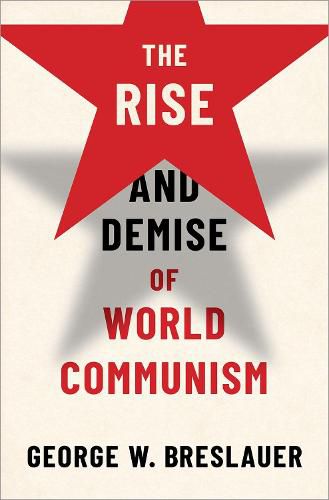Readings Newsletter
Become a Readings Member to make your shopping experience even easier.
Sign in or sign up for free!
You’re not far away from qualifying for FREE standard shipping within Australia
You’ve qualified for FREE standard shipping within Australia
The cart is loading…






A concise, readable, and novel interpretation of the history of communist states.Sixteen states came to be ruled by communist parties during the 20th century. One, the Soviet Union, was geographically the largest nation in the world and a superpower. Another, China, had the world’s largest population. At communism’s high point, its adherents envisioned global triumph. Today, however, only five communist regimes remain in power. Why?In The Rise and Demise of World Communism, George Breslauer, a specialist who has spent decades observing the evolution of communist states, provides a sweeping history of the world communist movement, focusing in particular on what communist states shared in common and why they began to differ from each other over time. Throughout, Breslauer explores the relations among communist states as well as the relations between those states and the world of increasingly affluent, and militarily formidable, democratic-capitalist powers. He finds that these regimes all came to power in the context of warfare or its aftermath, followed by the consolidation of power by a revolutionary elite that valued revolutionary violence as the preferred means to an end, based upon Marx’s vision of apocalyptic revolution and Lenin’s conception of party organization. As Breslauer shows, all these regimes went on to build socialism according to a Stalinist template and were initially dedicated to anti-imperialist struggle as members of a world communist movement. But their common features gave way to diversity, difference, and defiance after the death of Joseph Stalin in 1953. For many reasons, and in many ways, those differences soon blew apart the world communist movement and eventually led to the collapse of European communism. Even though a few communist regimes still remain in power, the dream of world communism is dead. But the future of the remaining communist regimes is uncertain.An accessible history of one of the most important political phenomena of the past 150 years, The Rise and Demise of World Communism provides readers with a crisp account of the entire movement–from the theories of Marx and Lenin to the on-the-ground policies of Stalin, Mao, Gorbachev, Deng, and other communist leaders-that culminates in our own era.
$9.00 standard shipping within Australia
FREE standard shipping within Australia for orders over $100.00
Express & International shipping calculated at checkout
A concise, readable, and novel interpretation of the history of communist states.Sixteen states came to be ruled by communist parties during the 20th century. One, the Soviet Union, was geographically the largest nation in the world and a superpower. Another, China, had the world’s largest population. At communism’s high point, its adherents envisioned global triumph. Today, however, only five communist regimes remain in power. Why?In The Rise and Demise of World Communism, George Breslauer, a specialist who has spent decades observing the evolution of communist states, provides a sweeping history of the world communist movement, focusing in particular on what communist states shared in common and why they began to differ from each other over time. Throughout, Breslauer explores the relations among communist states as well as the relations between those states and the world of increasingly affluent, and militarily formidable, democratic-capitalist powers. He finds that these regimes all came to power in the context of warfare or its aftermath, followed by the consolidation of power by a revolutionary elite that valued revolutionary violence as the preferred means to an end, based upon Marx’s vision of apocalyptic revolution and Lenin’s conception of party organization. As Breslauer shows, all these regimes went on to build socialism according to a Stalinist template and were initially dedicated to anti-imperialist struggle as members of a world communist movement. But their common features gave way to diversity, difference, and defiance after the death of Joseph Stalin in 1953. For many reasons, and in many ways, those differences soon blew apart the world communist movement and eventually led to the collapse of European communism. Even though a few communist regimes still remain in power, the dream of world communism is dead. But the future of the remaining communist regimes is uncertain.An accessible history of one of the most important political phenomena of the past 150 years, The Rise and Demise of World Communism provides readers with a crisp account of the entire movement–from the theories of Marx and Lenin to the on-the-ground policies of Stalin, Mao, Gorbachev, Deng, and other communist leaders-that culminates in our own era.